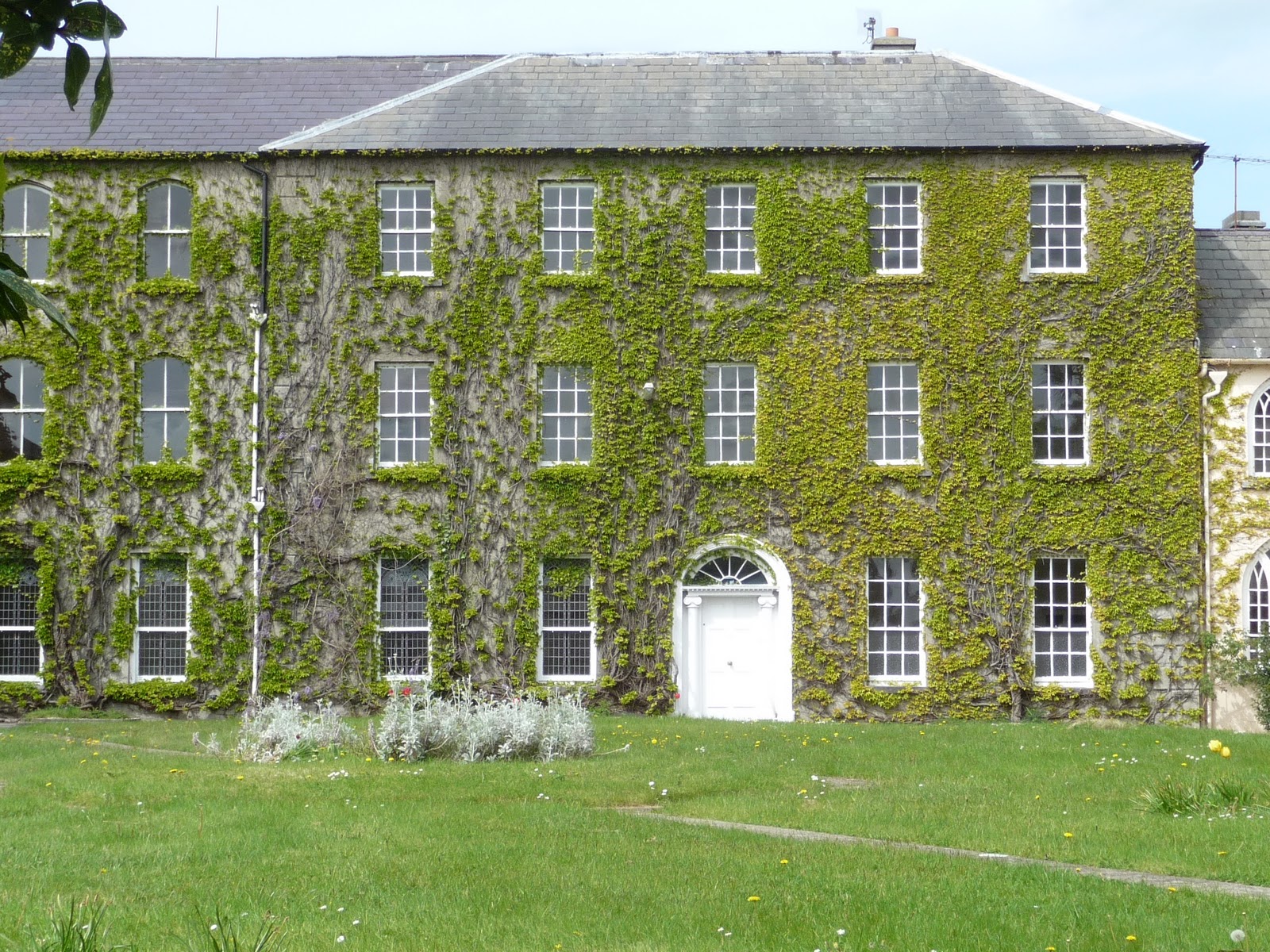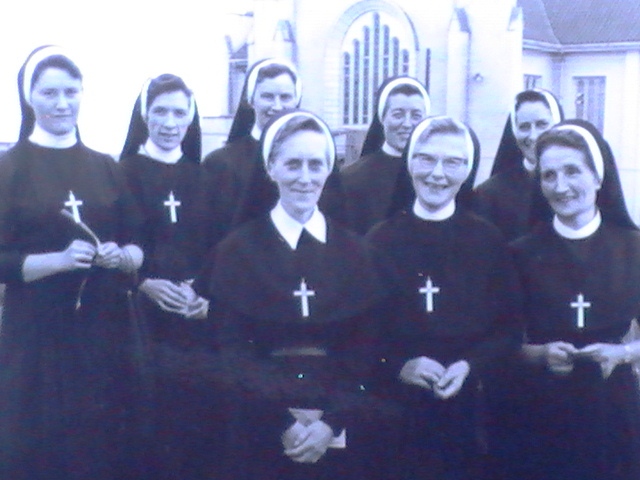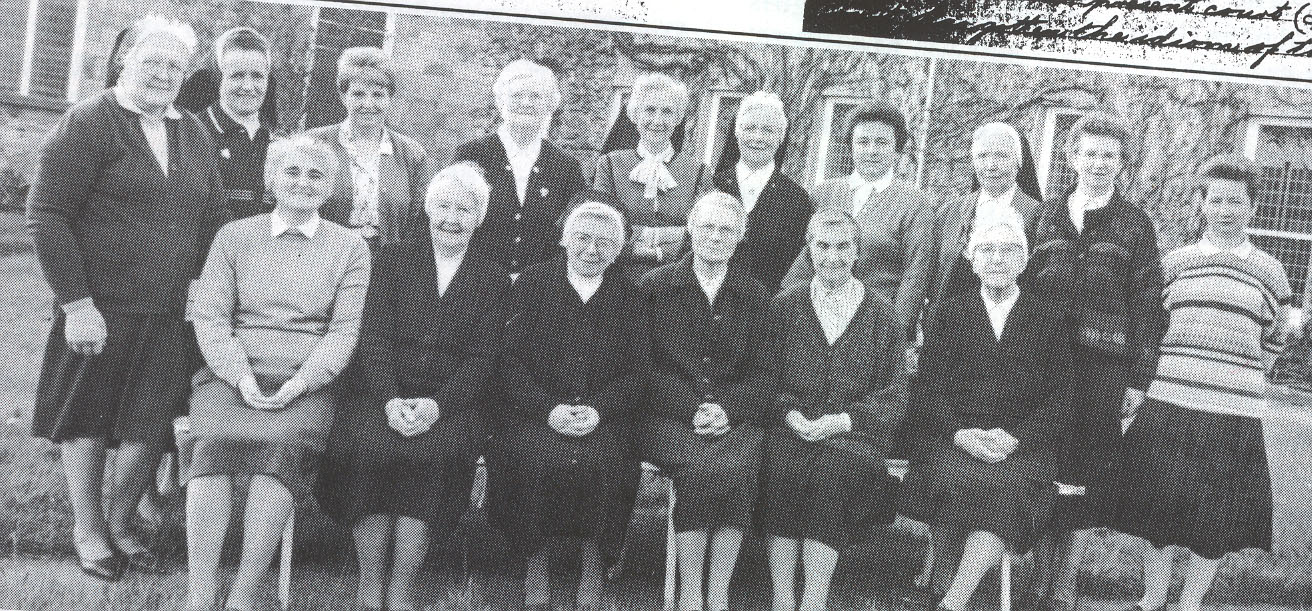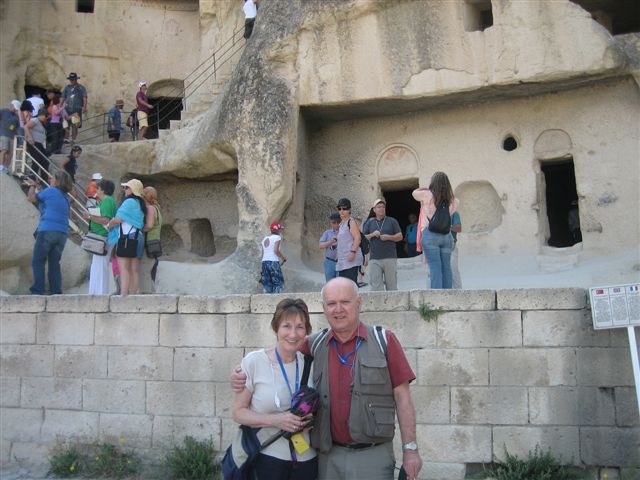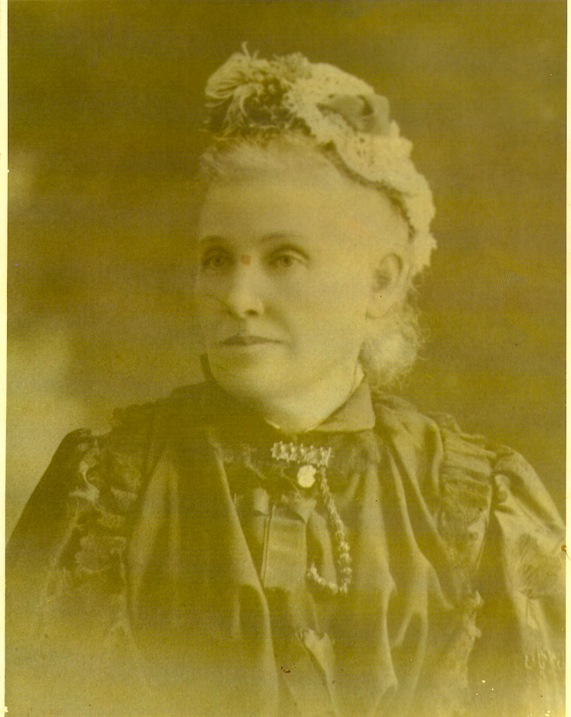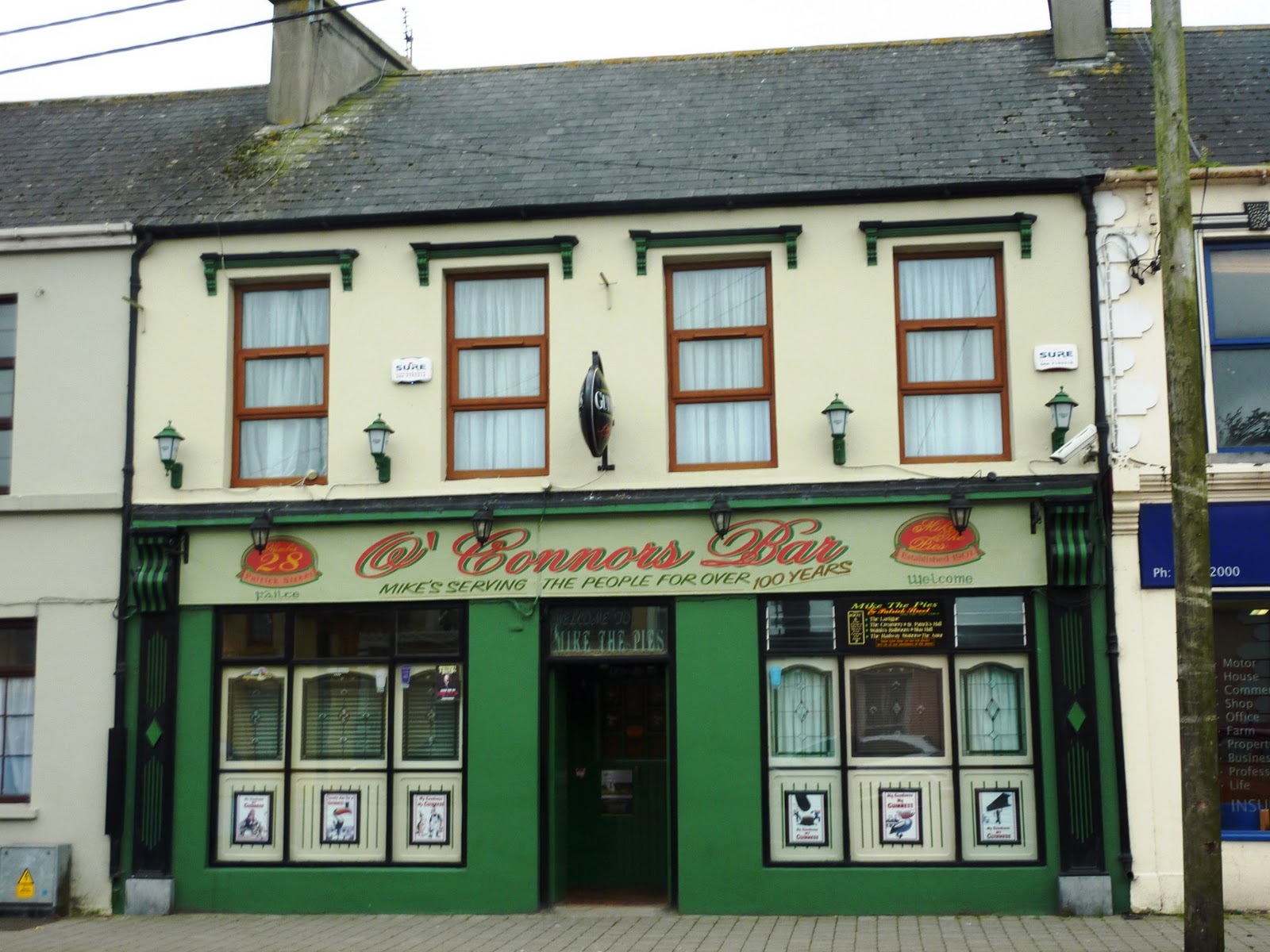Today’s Irish Times article is about the scourge of emigration, not in famine times but today.
Today, The Irish Times launches Generation Emigration, a conversation – on the web and in print – with Ireland’s mobile citizens, wherever they may be in the world Introducing the project, its curator CIARA KENNY looks at how the internet has made the world a smaller, cosier place for emigrants
IT IS NIGHTFALL in the Doyle household in Manly, Sydney, and two-year-old Valentine is putting on her pyjamas, brushing her teeth, and getting tucked in to bed. A laptop glows beside her as she settles down to sleep, her Irish and French grandparents joining in the bedtime routine by webcam from the other side of the world.
“I don’t think we could do it without Skype,” says Vallie’s father Devin (41), a screenwriter from Portmarnock in Dublin, who emigrated to Australia with his French wife Nadège in 2007.
“Facebook is fantastic for maintaining a sense of involvement with friends and family back home, but Skype is making it possible for our daughter to know her grandparents. Although they desperately miss not being able to hug her, at least she knows what they look like, and they can see her growing.”
For the vast majority of Irish emigrants, the days of waiting by the postbox for a letter from home have long been replaced by instant communication across thousands of miles. Facebook, Twitter and Skype have created online communities that span continents.
The experience of living so far from home has changed dramatically for Devin since he first lived in Australia in the 1990s.
“Phone contact was possible but expensive, and my parents didn’t have email, let alone Skype,” he says. His mother used to cut out articles she thought he’d like from The Irish Times and send them by “snail mail”, and his father would spend a small fortune posting VHS tapes of Premiership football matches.
Although he still enjoys getting clippings in the post and seeing his mum’s handwriting, Devin can read the articles on The Irish Times website and watch the football matches live online.
“The boys in our family bond a lot through football, and nowadays we can sit down and watch the matches together live on the internet. We’ll often run a Skype text chat on the side while we’re doing something else on the computer, if we’re online at the same time. It’s nice. We chat about the weather, the football, aviation, war films, jazz . . . I’d go so far as to say that I’m probably even more in touch with my father now than I would have been at home.”
Facebook and Twitter have also affected long-distance relationships in a profound way by facilitating “passive monitoring” of friends’ lives, according to Lee Komito, a senior lecturer in the School of Information and Library Studies in University College Dublin, who is researching the impact of social media on migration.
“Internet users can browse photos of their friends online, read status updates, see what events their contacts have attended, and generally keep up-to-date with daily life back in Ireland,” says Komito. “They can also watch programmes and videos online, listen to Irish radio, read the news, and completely surround themselves with exactly the same information and social interaction that they would engage with online at home,” he adds.
“But the most distinct benefit of these new media technologies is the fact that you can combine the visual, text and audio components, and in real time. No one would say it is as good as being there with the person, but it is very close to it.”
THE INTERNET HAS removed much of the anxiety from the process of moving abroad but it has also made planning much easier. Today’s emigrants can use it to research their destination, apply for visas, view apartments, send out CVs, and even carry out job interviews over Skype.
“Those who are planning to move to Canada now see the internet as their first and main resource,” says Brian Reynolds, who runs IrishAlien.com, a forum and information resource for Irish people in Canada. “We have a few thousand visitors to our site on average per week, asking the same questions we did when we arrived. What’s the best city to live in? How long does it take to get a job? What is the rent like? These are issues for everyone, from the qualified lawyer to the student.”
Online social networks have replaced the traditional role of the Irish pub or community centre as the place to create social and professional links in their new hometown.
“Networking with other Irish people is not necessarily about gathering around an Irish cultural activity to reminisce about home anymore,” explains Mary-Clare Connellan, who launched GlasLondon.com in May, which aims to provide an online space where Irish people can connect with one another, and a resource of “how to” information for Irish people who have recently arrived in the city.
“Irish people want to network with each other because they have a similar attitude to business, to meeting people, and to helping each other. The first networking event we held attracted people from every single profession you could think of,” she says.
Komito believes links created through social networking may create a more mobile Irish population.
“If these contacts are maintained over a long time, people are more likely to have connections who can help them to suss out whether there are better opportunities somewhere else. Before, people would leave Ireland and establish themselves in a new place, and it would be rare for them to up sticks and resettle in another place, unless they were coming back home again. That is changing,” he says.
‘Social media is the new way of creating an ex-pat community’
LONDON
Jane Kenny (27)
Three months after her graduation from NCAD this summer, Kenny, a textile designer and fashion blogger from Dublin, moved to London to pursue a career in fashion. She has used Twitter and her fashion blog, Noisy Shoes, to bridge her professional transition between countries.
“I have a fashion line in Om Diva on Drury Street, in Dublin and I can coordinate everything from here by email, and use Facebook and my blog to promote it. While I want to base myself here in London, I like the idea of being able to still work and have connections in Dublin, as I think it is a great city. That would be really difficult without social media.”
Kenny has also used social media to create a new circle of friends in London. “The old notion of going to the Irish pub seems so foreign to me, I would never dream of going to one, unless to watch the rugby. Instead, I use social networking sites to find other places that would be more suited to my interests. Social media is the new way of creating an ex-pat community.”
LOS ANGELES
Emily Gotto (28)
From Kinsale, Co Cork, Gotto has spent her life on the move. Since graduating with a BA from UCD in 2006, she has lived in Dublin, Nottingham, New Zealand and Spain.
She is currently living in Los Angeles finishing an MA in film audio visual management, but is planning to move to New York in September.
“I move every three months on average. I didn’t plan it that way; it just happened really,” she says.
Social media has been an important way for Gotto to remain connected to Dublin, which she calls her “real home”, and keep herself up-to-date with what’s happening in her friends’ lives back in Ireland.
“I’m lucky to have a very accepting and loyal and generally amazing bunch of mates that grab me on Skype for a chat or comment on my pictures on Facebook, even though they are rarely ever in them these days, which makes me feel as though I didn’t sacrifice one life for another.”
Gotto says her new network of friends in LA were made mostly through other friends and introductions on Facebook.
THE RETURNED EMIGRANT
Róisín Cameron (27)
When Cameron returned to live in Dublin last month after almost five years in London and New York, new faces among her old circle of friends were familiar before they had even met.
“Coming back to Ireland has been hard,” she says. “But the internet definitely helped me to keep a handle on what was going on here while I was away. When I am introduced to someone new here now, I will probably already know their name because I recognise them from photos on my friends’ Facebook pages.”
Cameron, who is taking a break from publishing to do a masters’ in American Studies in UCD, used Gmail Chat instant messenger to keep in touch with close friends while living abroad, but says Facebook was important for keeping up-to-date with what was happening among her wider social circle.
“If I had to rely solely on email, I don’t think I would have lost touch with close friends, but I definitely would have fallen out of contact with acquaintances,” she says. “But by reading their Facebook posts for a week, you are staying in each other’s lives without having to make any effort.”
Generation Emigration: An Irish Times editorial project
LAST YEAR, an average of more than 100 Irish people a day went overseas in search of opportunities and adventure. This mass exodus of Irish citizens will have a lasting impact on their lives, on the lives of those they’ve left behind, and on our society and economy.
Today, The Irish Times launches Generation Emigration, an online and print initiative aimed at this current generation of mobile Irish citizens. It’s a two-way dialogue that will be curated and facilitated by Ciara Kenny.
Online, a multimedia blog on irishtimes.com will feature stories and opinion pieces from Irish people overseas and other guest contributors, news for the Irish community abroad, and a discussion section where readers can express opinions, ask questions and debate a range of issues relating to Irish emigration.
In print, the newspaper will highlight a different emigrant experience every Friday, through interviews with Irish people living in diverse locations around the world.
Readers are invited to contribute their views, news, experiences and stories.
You can access the blog at irishtimes.com/generationemigration
Follow it on Twitter @GenEmigration
Keep in touch on our Facebook page, facebook.com/generationemigration
Or you can email us on emigration@irishtimes.com




